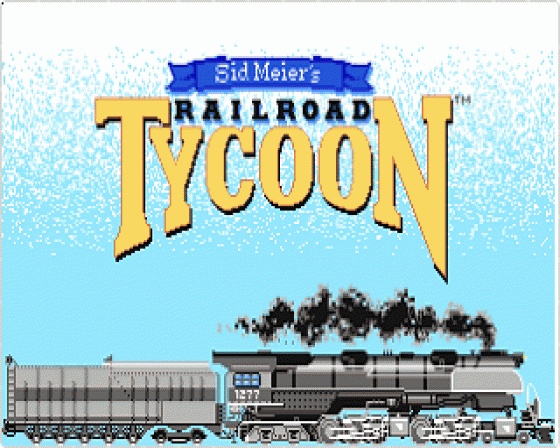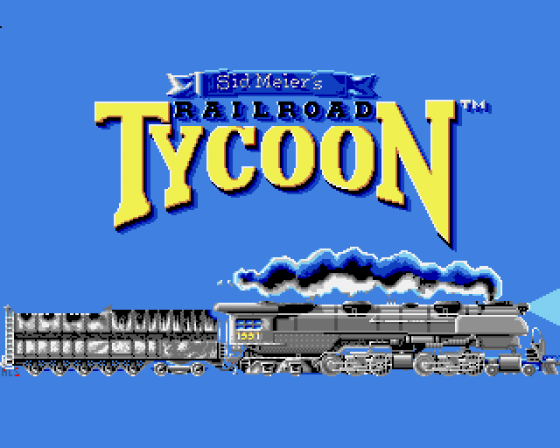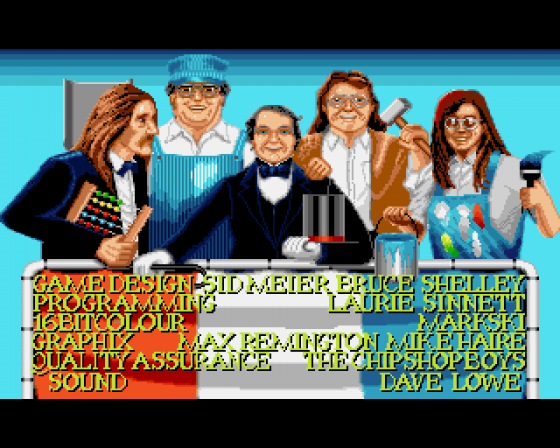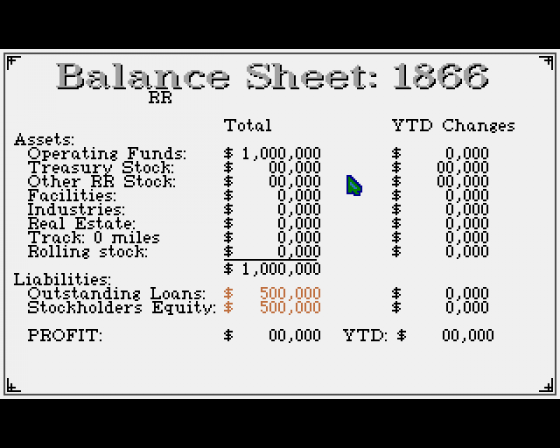
The One
 1st June 1990
1st June 1990
Categories: Review: Software
Author: Kati Hamza
Publisher: Microprose
Machine: Amiga 500
Published in The One #21
MicroProse's simulator has more bells and whistles than Casey at the throttle of the Cannonball Express. Kati Hamza hitches a ride.
Railroad Tycoon
Back in the early days, when British Rail was but a gleam in the nation's eye, railroading was an adventure - for the tycoons who built the engines as well as the men who drove the trains. With as little capital as a million dollars, a smart entrepreneur could make his fortune - all he had to do was lay some track.
Railroad Tycoon gives you a taste of what it must have been like in those early pioneering days. From surveying the ground to building the stations, from raising cash to buying out competitors, this is your chance to strike it rich.
There's a choice of four difficulty levels for four virgin territories - East America, West America, England and Europe. Using pull-down menus and maps, it's up to you to study an area's resources, slap down a railroad and please your shareholders by raking in the cash. Outdo your competitors and you could be on your way up to Easy Street. Flop too often and it's back to Skid Row.
1
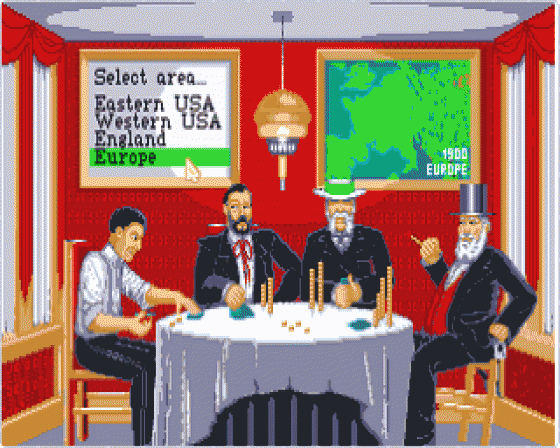
This is the land of milk and honey - the place that's going to make you rich. Geographically all four territories are fairly accurate, although geological and economic details vary each time you play.
All of a country's natural resources are included, but they won't necessarily be found in the correct historical place. Brighton, for example, could become the equivalent of Manchester and initiate a parallel industrial revolution in the south east.
2
The key to turning your small local steam train into an empire of screaming inter-cities is a basic understanding of how industries work. There's no point in taking coal to Newcastle, lumber to a grain store or paper to oil refineries. The resource map, seen here in its local version, suggests where a supply of coal (C) might be linked to a factory that requires it (Boxed C). There's even scope for exploiting untapped resources yourself - simply build a factory wherever seems most appropriate.
3
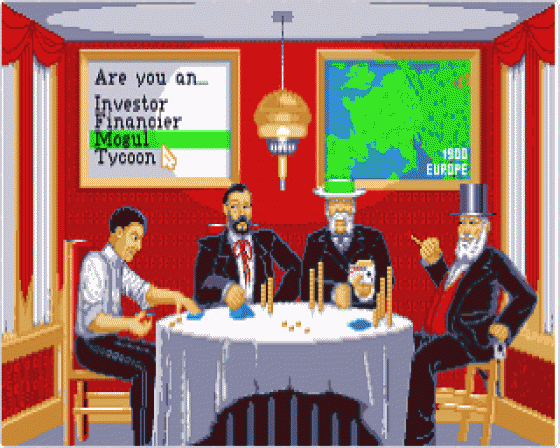
Of the four different map scales, the detailed view, which zooms in closest on resources, is the only one on which you can lay track and build bridges, stations and tunnels. It's worth surveying the ground first to check on the most appropriate routes. Trains can't cope with high gradients, so it's best to build round hills wherever possible - tunnels are an expensive alternative.
4
Track's no use without a station and there are four basic types to choose from: signal tower, depot, station and terminal, in ascending order of building and running expense. The choice depends o the size of your catchment area (the bigger the station, the larger its area of influence), the type of goods you expect to carry (you need at least a station if you want to carry passengers) and your bank balance - terminals don't come cheap. Station add-ons such as engine shops, restaurants, post offices and maintenance sheds can be added at will.
5
Shrewd financial investors keep a firm eye on the books. A visit to the stockbroker puts you in touch with your financial situation, allows you to buy and sell bonds, acquire your own shares or buy up parts of other railroads. With the aid of cash and good business acumen, any one of the four local railroaders could attempt to take another over. The victorious speculator gets all his rival's assets and exclusive control of both railways' expansion and development. The loser is out of a job.
6

You start out with capital of a million dollars, half of which investors have put up. Your balance sheet can be viewed at any time, but the real crunch comes at the end of a fiscal period - every two years. That's when the shareholders expect some return on their investment - displeasure means that your days as Big Cheese are numbered.
7
Train details are shown on this status screen. Here you can alter the proposed route, type of train (local or express for example) and change or upgrade engines as the technology becomes available. A train's consist (the number and type of carriages attached at each station) is vital. Cargo can only be transported in the appropriate container wagons and different stations on the route may have different requirements. As the maximum speed of most of the early engines doesn't exceed 20mph, carrying useless empty wagons isn't just expensive - it also wastes time.
8
This is a land of railway opportunity and no investor is ever on his own for long. Up to three other rivals are bound to turn up somewhere in the vicinity - how ferocious they are as competitors is a matter of luck and difficulty level. You can't build a station in the same town as an opponent but you can lay track into their stations.
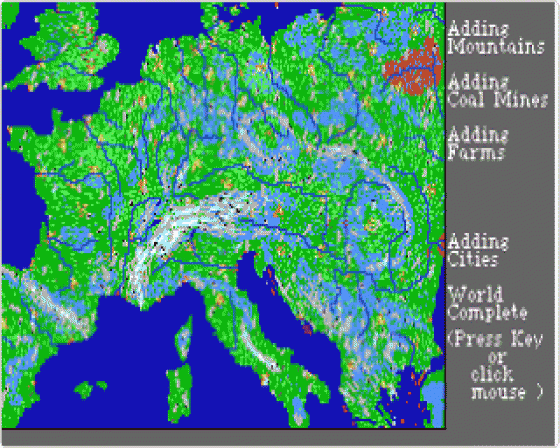
This automatically triggers off a price war. The rivals are allotted a period of time to prove they can run the most efficient and profitable service after which the citizens vote on who they want to keep.
The loser has all his track pulled up as a penalty and forfeits any stations left in limbo as a result. The winner now has a monopoly and can afford to charge double the original price!
PC
Railroad Tycoon isn't like playing with a train-set - it's better. Forget fixed track systems and lopsided plastic sheep - in this game, the track is infinitely expandable and livestock isn't just for decoration, it's something you can sell.

Detail is the key. Exceptional care has gone into including as much genuine information about the four different economic environments as possible - consequently there's enough depth to support almost any money-making strategy you care to adopt. Whether you ignore your rivals or opt to bludgeon the opposition off the rails is entirely a matter of choice.
There's even a bit of political detail involved: on the American east coast, for example, it pays to take advantage of government subsidies granted to anyone building their railroad from east to west. Like Maxis' Sim City, Railroad Tycoon challenges you to create a better, more efficient system every time you play - and a freshly regenerated resource map for every game means there's no chance of running out of steam.
The drawbacks are negligible: inevitably the game system does take a bit of getting used to and it's worth going through the tutorial. It's also easy to click on an icon when you don't want to - an option to take back a move might have helped. Some very realistic effects via Roland and AdLib sound boards add that extra bit of atmosphere to a slick, complex and vastly challenging game. Thankfully, the only thing it hasn't got is a British Rail sandwich.
Amiga
Plans for an Amiga Casey Jones simulator are being drawn up at this very moment, but it's far too early to say when it's likely to steam out of the engine shop. In terms of essentials it should follow the PC version track for track.
ST
Would-be ST Railroad Tycoons will also have to wait for further details. Again, there's no reason why it will differ from the PC original. More details when we have them.
Other Reviews Of Railroad Tycoon For The Amiga 500
Railroad Tycoon (MicroProse)
A review
Railroad Tycoon (Microprose)
A review


